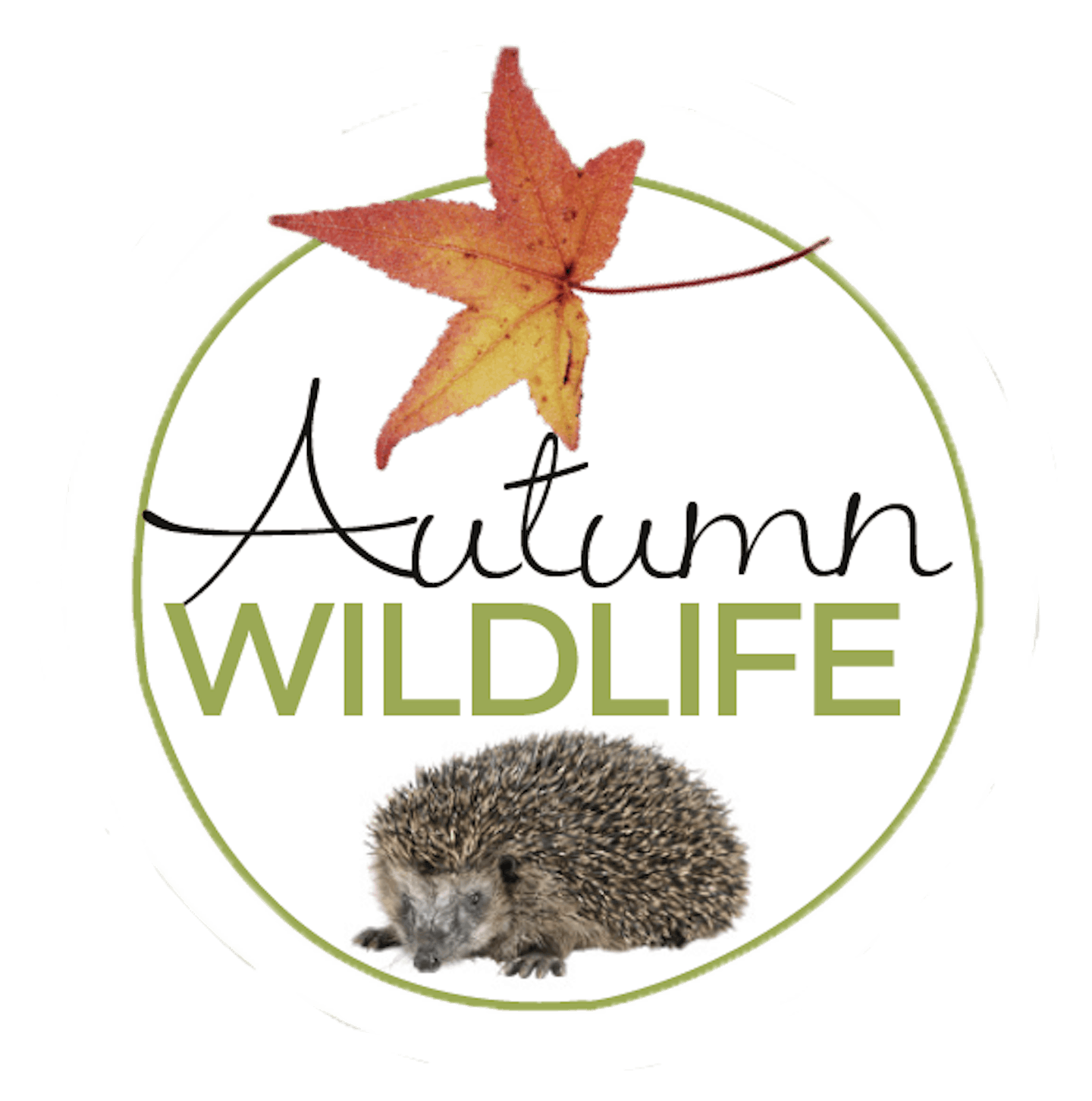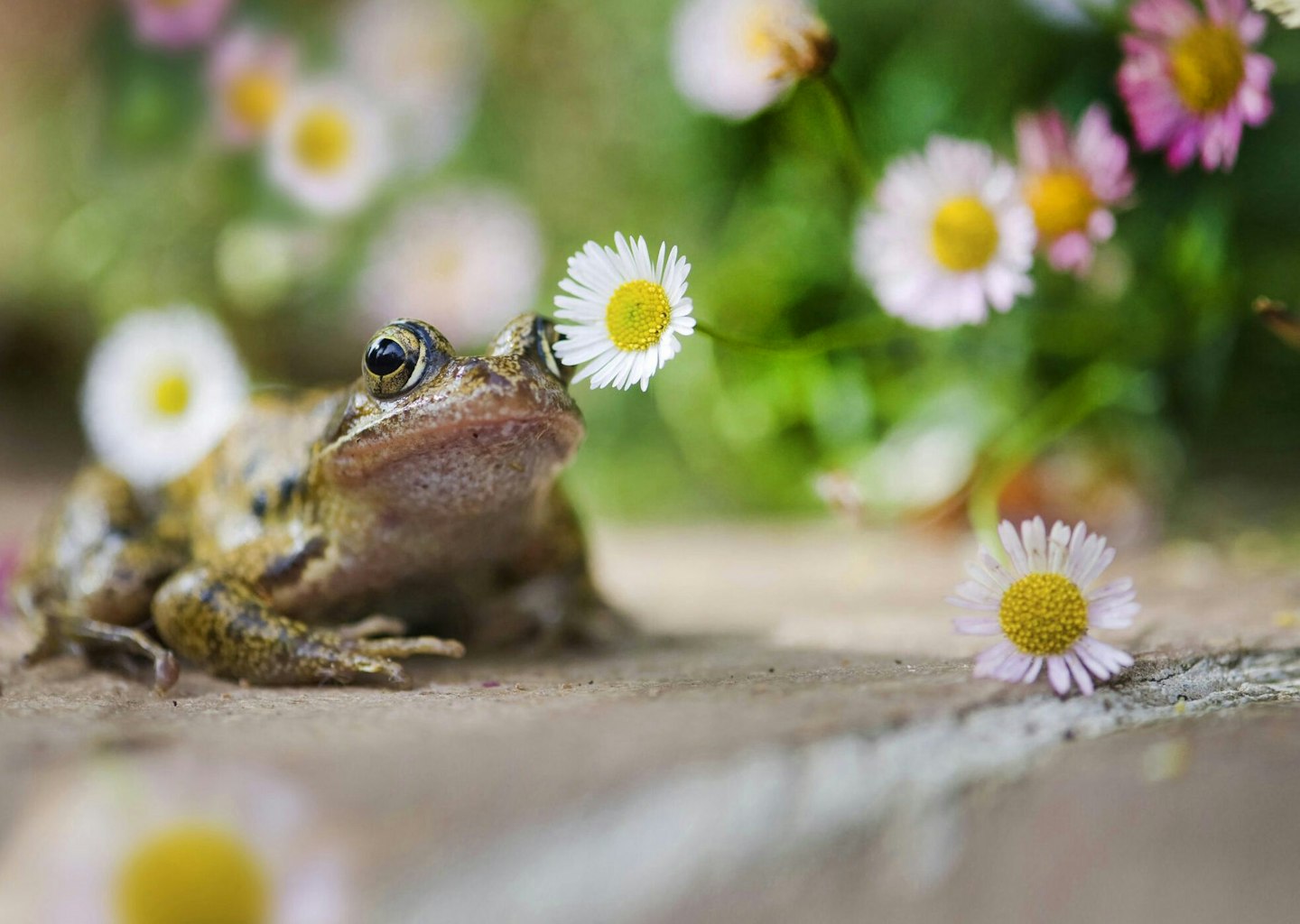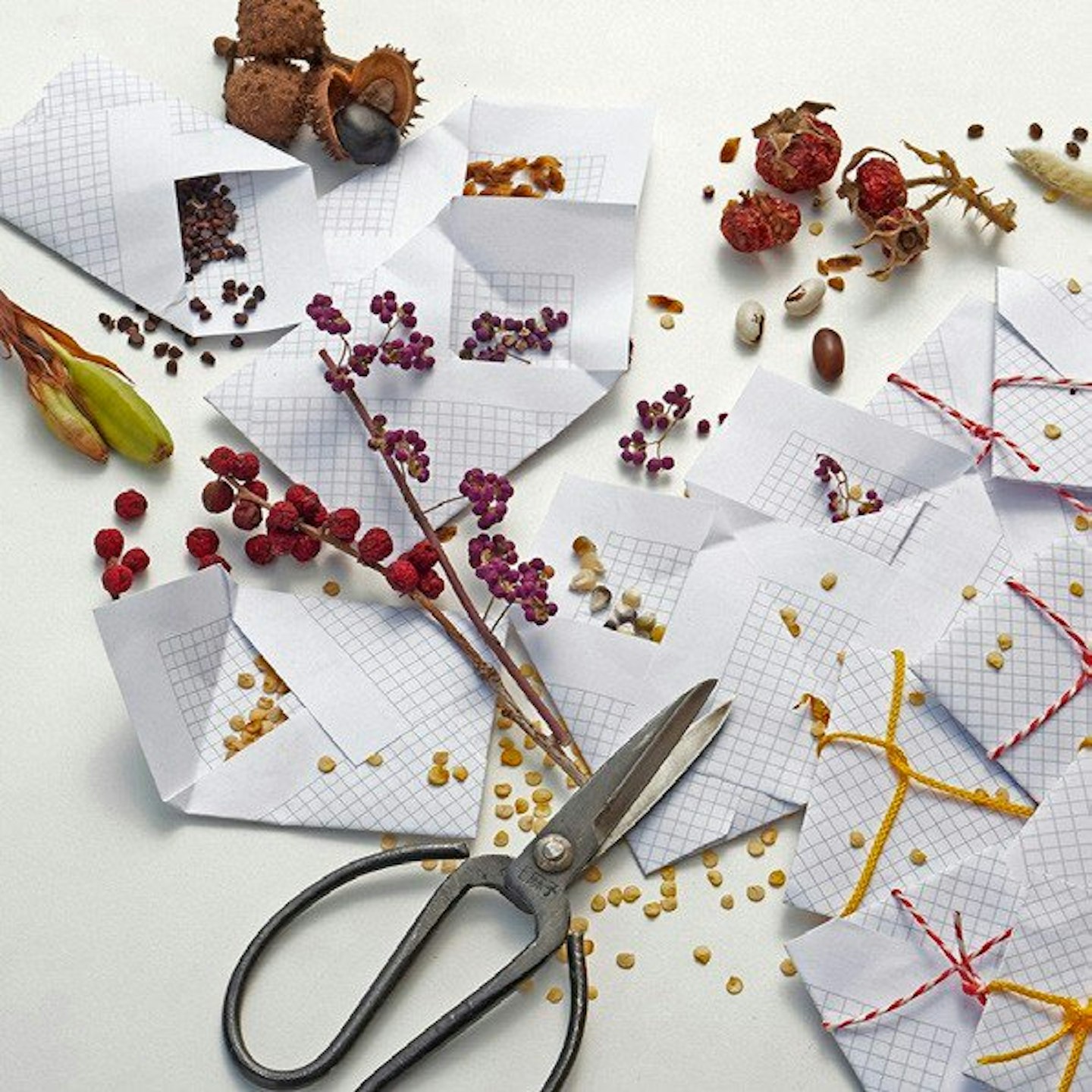Adrian Thomas suggests all sorts of ways to inspire others to help wildlife in their gardens – and find extra inspiration for yourself


It is often said that we are a nation of gardeners, and there are indeed an estimated 27 million of us who love getting our hands dirty to create beautiful spaces.
Not only that, but many of us also go out of our way to help wildlife in our gardens, and we know it is a major topic of interest for Garden Answers readers.
A survey conducted by YouGov for the Wildlife Gardening Forum found that 59% of people in the UK aged 55 and over felt that they did a lot or a fair amount to help wildlife in their outside spaces. This figure dropped a little through the age categories but was still a respectable 32% of 18-24 year olds.
However, that still leaves many who don’t do much, or indeed nothing, to help wildlife – and even among those who do, there are still lots of things they could try that could make a big difference. For example, of those who say they do ‘a fair amount’ or more for wildlife, over a third still use pesticides, less than half have put up a nestbox or leave areas of their lawn to grow long, and only a fifth have a pond. So, how do all of us committed gardeners encourage and inspire others to make more gardens great for nature?
Engaging other people is not usually at the top of our list of things to do in the garden! Most of the time, we just get our heads down and busy ourselves in our own space; the garden can often be more a place to escape the rest of the world rather than interact with it.
Inspiring others means looking beyond our garden borders once in a while and reaching out to share what we are doing and why. It can feel quite at odds with the social norm of hiding your light under a bushel and not appearing to trumpet what you do.
But sharing is also part of our nature, as is talking! Don’t worry if you think you don’t know enough. We are all on the great learning curve and none of us is master of everything. This is about being generous with what you do know, and sharing that most infectious of things – your passion.
The time to do it is definitely now rather than the tomorrow that never comes. Much of our wildlife is struggling desperately, but there is increasing evidence to show that gardens – if done well – can be a vital resource for all sorts of unusual and threatened species and for once-common creatures that are now in steep decline.
So, if we can inspire more people to play their part in its revival, we have a genuine opportunity to leave our piece of this wonderful world in a better state than we inherited it. And, together, our collective efforts can achieve amazing things.
12 ways to inspire others to help wildlife in their garden

1 Give gardening presents for Christmas and birthdays that will help your friends and family garden with wildlife in mind, such as tools and equipment. Add a personal note to explain how you use those things and why they have been so helpful to you.
2 Give friends and neighbours seeds you’ve collected from your favourite wildlife-friendly plants. Add some helpful notes about how and where to grow them, and why they are so good for wildlife.
3 Invite friends and family to come and see the garden, and share your knowledge. Point out the wildlife they might not otherwise notice, tell them what you’ve seen, and explain how you’ve tried to help creatures. Time the visits to see wildlife such as hedgehogs coming to feed at dusk or birds using your feed table.
4 Catch them young. People are far more likely to take up an activity in adulthood if they did it as a child, so if you have youngsters in your family or social circle, invite them to come and get involved. Guide them, enthuse them, give them meaningful tasks to perform and space to express themselves. Allow them to do it in their own way rather than exactly as you would like it. And congratulate them on all their successes.
5 Recommend books and websites that you yourself have gained inspiration from, and why they have helped you so much. You might loan out your favourite books to friends and neighbours, or pass on magazines like this once you have read them.
6 Put up fun little signs in your front garden to inspire passers-by, letting them know that you are gardening with wildlife in mind and pointing out the plants and creatures that might pique their interest.
7 Give away spare plants that you’ve grown, whether excess stock, self-sown seedlings you’ve dug up and potted on, herbaceous perennials you have divided, or cuttings you’ve taken. Explain how easy it was to create all the bounty for free.
8 Share your experiences on social media, in local newsletters or on a blog. Photograph it and write about it. Talk about the challenges you’ve overcome as well as all the easy wins. Describe all the pleasure it has brought.
9 Hold a ‘bioblitz’ day in your garden. This is where you invite friends and family to come and find as many different creatures as they can in the garden. If you know of a local expert, say, in butterflies or dragonflies or wildflowers, or who can come and put up a moth trap the night before, all the better. Compile a grand list as you go. With many inquisitive eyes, they are sure to turn up something unexpected, and for anything you can’t identify, there are wonderful online forums to help you out.
10 Invite friends and family to come and help in the garden. It might seem odd and not quite British to appear to be seeking free labour, but choose an activity that will be a fun, sociable and rewarding, such as sowing a wildflower meadow. They can then come back and share the pleasure of the results. A reward of a fine meal or drink or two will top it off nicely.
11 Encourage people to challenge themselves. Sometimes they just need a little push to start something they haven’t done before. Give them the courage, in part by showing what is possible, and in part by reminding them that they’re allowed to make mistakes.
12 Talk about what you do and why to whoever will listen. We gain inspiration by following in the garden footsteps of those who show the way, so this is your chance to be a leader.
QUICK AND EASY WAYS TO HELP WILDLIFE
Few people have masses of time or money to spare, so if we are to inspire them, we need to give them quick, achievable things to do. Here are some brilliant things that are often easier than people think.
✿ Grow some plants. This is at the heart of wildlife-friendly gardening and anyone can do it; you don’t need green fingers. Tell them not to worry about any plants that fail – everyone has those. Just revel in those that do well.
✿ Ditch the pesticides. This can save effort and money. Yes, it may mean tolerating some damage to some plants, or more ‘weeds’ (wildflowers) in the lawn, but given time, nature will find its own balance.
✿ Make compost. It is the ultimate garden recycling and is as nature intended. The simple formula to get smell-free goodness is to mix ‘green’ (grass clippings, vegetable peelings) with ‘brown’ (chopped up twigs, shredded cardboard), and avoid meat and dairy products. It doesn’t need to be in a compost bin – it can just be in a pile somewhere.
✿ Let parts of a lawn grow long. Don’t feel restricted to No Mow May – ‘No Mow Summer’ is even better for wildlife. Again, it is also a wonderful time-saver. By mowing the edges with crisp lines, it can show that it is done with love rather than laziness.
✿ Make a log pile. Don’t have logs? Make a stick pile instead! It can be even better as a hiding place for wildlife.
✿ Put up a bird box or two. They are cheap and have a great chance of being used if sited well. Face them between north and east, somewhere where cats and other predators can’t reach them. And try to provide a range of boxes so that house sparrows, tits, robins and wrens all have options, and especially include larger boxes for starlings as their numbers have declined so much.
✿ Add water. A birdbath is the easiest method, which can be as simple as an upturned dustbin lid. But a small pond can be surprisingly easy to add to a garden. It is the kind of project that can usually be completed in a day, and will then give years of pleasure.
✿ Leave seedheads standing. This is another time-saving action that will offer food for birds in winter and places for insects, such as ladybirds, to hibernate. Those stems that survive the winter are easy to clear in spring.
5 WAYS TO INSPIRE YOURSELF
1 Set out to learn something. Find the best books or websites to tell you more about a wildlife topic. Maybe learn about grasshoppers or the food plants of butterfly caterpillars or what wildflowers are special to your area. It is through more knowledge that you will be able to make your garden an even richer place.
2 Seek advice. The guidance of a real expert can make such a difference. Maybe attend a talk at your local gardening or wildlife group or sign up for an online conference, or tap into the combined experience of groups such as the Wildlife Gardening Forum’s Facebook, where over 100,000 wildlife-friendly gardeners love sharing their knowledge.
3 Pledge to do something. By setting yourself a target to help wildlife, something you’ve never done before, you are more likely to achieve it. Maybe 2024 will be the year when you finally put in a pond or create a large hotel for solitary bees. Be brave. Challenge yourself. Try to do something you have never done before.
4 Put wildlife gardening gifts on your presents list. Make the unwrapping at Christmas full of the excitement and anticipation of a wildlife-filled year to come.
5 Do it rather than think about doing it. In the words of Mark Twain, “Twenty years from now, you will be more disappointed by the things that you didn’t do than by the ones you did do. So throw off the bowlines. Sail away from the safe harbour. Catch the trade winds in your sails. Explore. Dream. Discover.”
Plants to divide in autumn
These herbaceous perennials are perfect for dividing right now to give you lots of free new plants to give away.
● HARDY GERANIUMS
● ASTRANTIA
● EUPHORBIAS (wear gloves because of the sap)
● HEMEROCALLIS
● CIRSIUM
● PRIMULAS
Dig up a clump and tease into sections if possible or cut cleanly with a sharp spade into clumps. Replant each separately, or pot up some sections to grow on and give away.
WILDLIFE GARDEN JOBS FOR NOVEMBER
1 RAKE UP LEAVES off lawns, but don’t throw them away! They are a gift from above, to be piled in corners to become leaf mould or spread as a mulch under bushes, a rich picking ground for blackbirds and robins.
2 PLANT TREES. This is probably the best month to buy and plant bare-rooted trees, a cheap and easy way to start what will become a magnificent feature.
3 SOW YELLOW RATTLE SEEDS in your lawn. Cut the grass short, scarify it a little, and sow the seed now, as it needs winter’s cold to later germinate in spring. It will then help reduce the vigour of the grass.
Look out for...
● AUTUMN BERRIES. Watch the sequence of berries as they ripen and observe which are preferred by the thrushes and starlings.
● IVY FLOWERS. It is a last supper for so many insects in autumn, a honeypot that can throng with life right through into the start of winter.
● HEDGEHOGS under unlit bonfires. Make sure that they haven’t mistaken your prepared pile for a suitable winter hibernation home.

